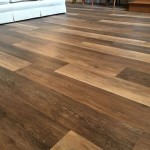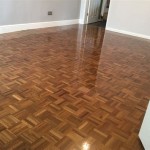Vinyl flooring is an increasingly popular choice for both commercial and home interior design projects. Durable and easy to maintain, vinyl floors come in a variety of colors, textures, and styles that make them an ideal choice for any space. This comprehensive guide will provide you with all the information you need to make an informed decision about vinyl flooring, from the basics of what it is to the advantages and disadvantages, so you can make the best decision for your home or business.
What is Vinyl Flooring?
Vinyl flooring is a type of flooring made from polyvinyl chloride (PVC) and other synthetic materials. It is available in both sheet or tile form and is easy to install and maintain. It is also resistant to water and stains, making it a popular choice for bathrooms, kitchens, and other wet areas. It is also a low-cost flooring material, which makes it an attractive option for many homeowners.
Advantages of Vinyl Flooring
Vinyl flooring has a number of advantages, such as its durability and low cost. It is also resistant to fading, making it a good choice for busy areas like kitchens and bathrooms. Vinyl flooring is also easy to install and comes in a variety of colors and patterns, so it can be used to complement any decor. Additionally, it is also resistant to scratches, making it a good choice for high-traffic areas.
Disadvantages of Vinyl Flooring
Vinyl flooring has a few drawbacks. It is not as durable as other types of flooring, such as hardwood, and can be easily damaged by sharp objects. It is also not as environmentally friendly as some other flooring options, as it is made from petroleum-based products. Additionally, it can be difficult to repair and may need to be replaced if it becomes severely damaged.
Choosing the Right Vinyl Flooring
When choosing vinyl flooring, it is important to consider the type of room it will be installed in. Vinyl floors are not as durable as other types of flooring and may not be suitable for high-traffic areas. It is also important to consider the type of patterns and colors available, as the right ones can help to bring out the best in any space. Finally, it is important to consider the cost, as vinyl flooring can be an affordable option.
Cleaning and Maintenance of Vinyl Flooring
Vinyl flooring is relatively easy to maintain. Basic cleaning can be done with a damp mop or cloth and a mild detergent. For tougher stains, a mild abrasive cleaner can be used. It is important to avoid using harsh cleaners, as these can damage the floor. Additionally, it is important to periodically reseal the floor to keep it looking its best.
Conclusion
Vinyl flooring is an increasingly popular choice for both commercial and home interior design projects. Durable, easy to maintain, and low-cost, it is an ideal choice for any space. This comprehensive guide has provided you with all the information you need to make an informed decision about vinyl flooring, from the basics of what it is to the advantages and disadvantages. With this information, you can make the best decision for your home or business.















Related Posts








